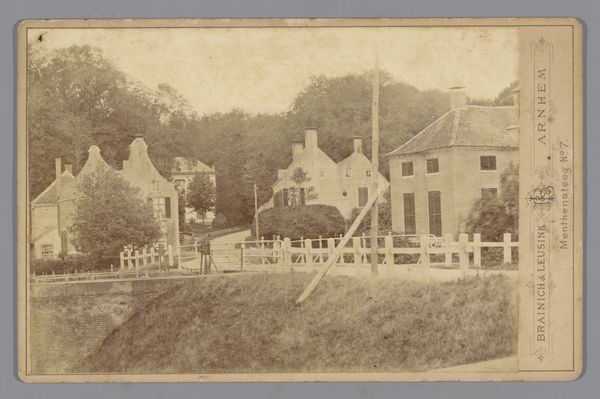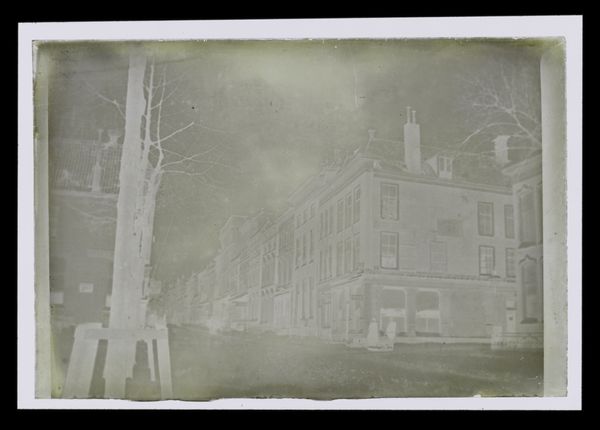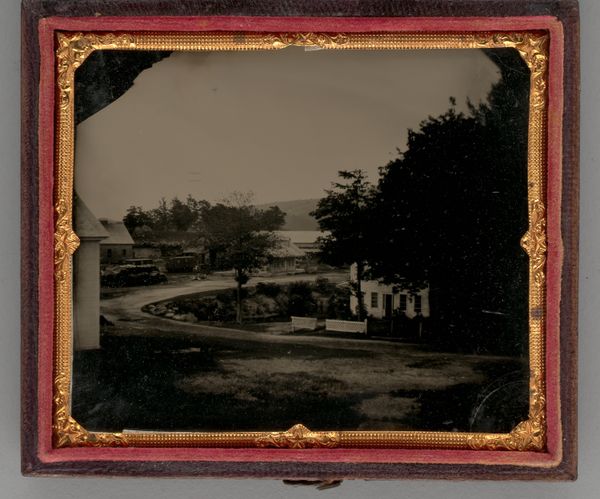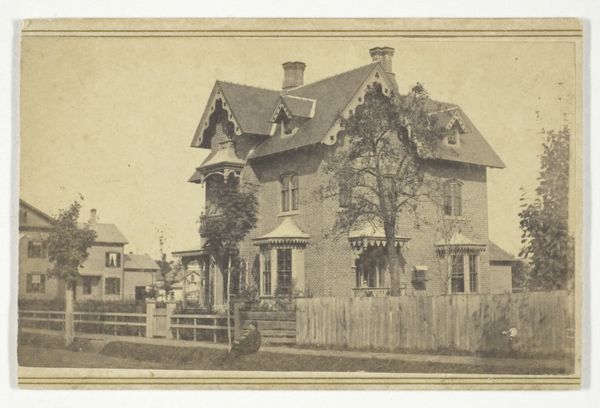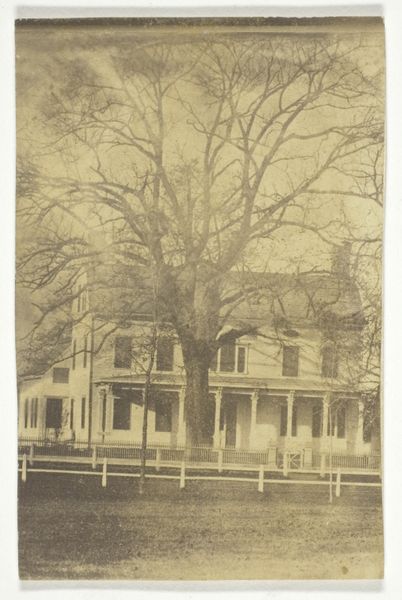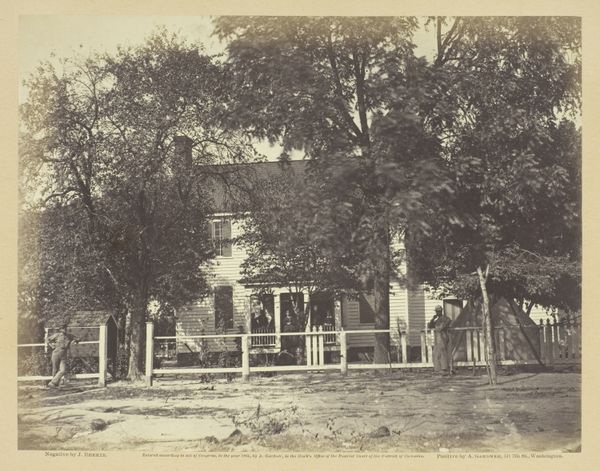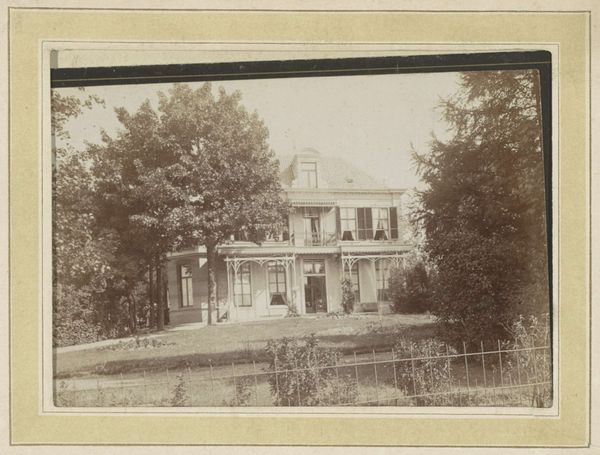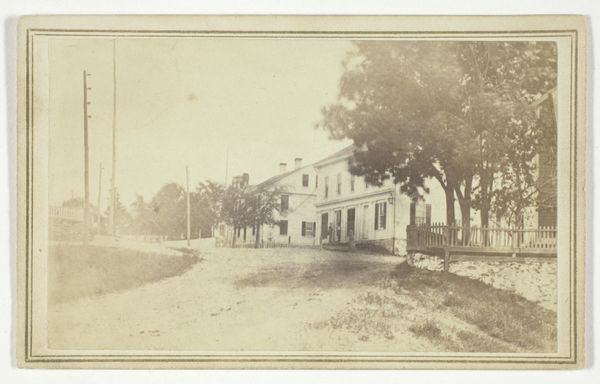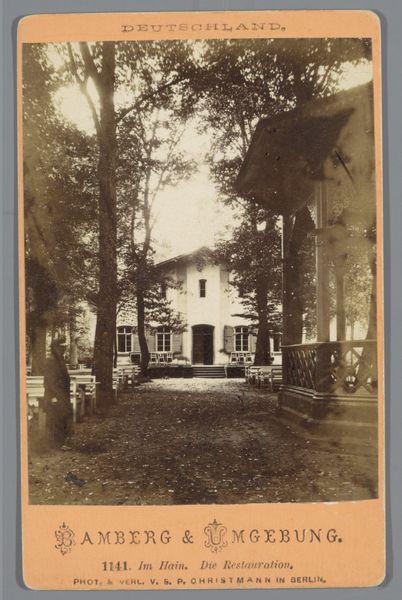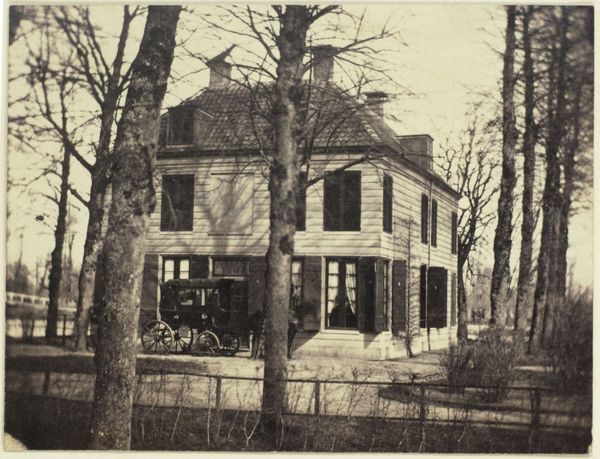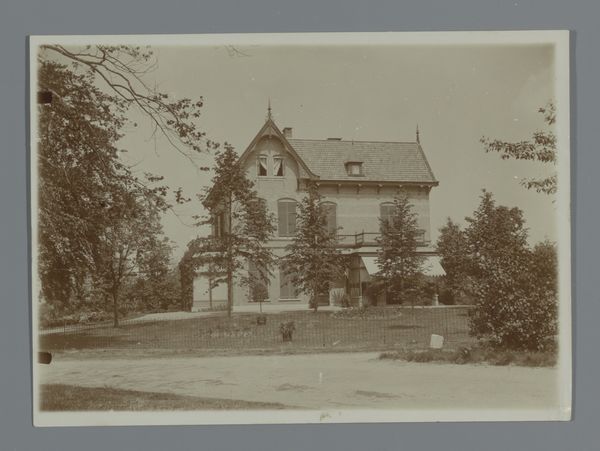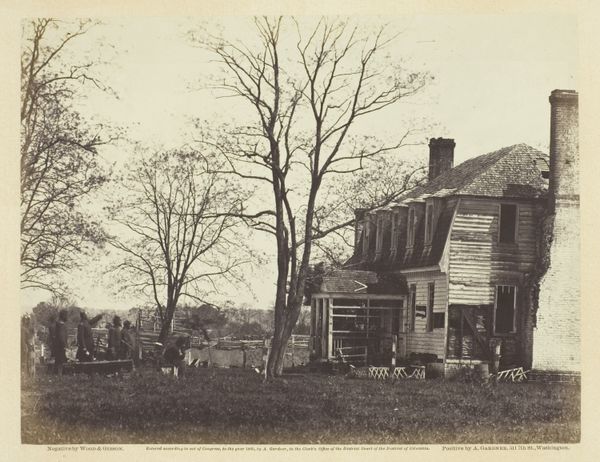
Two and a Half Story Brick Country House with Outbuildings with Ornate Porch and Picket Fence c. 19th century
0:00
0:00
daguerreotype, photography
#
16_19th-century
#
landscape
#
daguerreotype
#
photography
#
genre-painting
#
realism
Dimensions: 10.8 × 14.2 cm (plate); 12 × 15.3 × 1.5 cm (case)
Copyright: Public Domain
Curator: So this is a daguerreotype, an early photograph from the mid-19th century. It's called "Two and a Half Story Brick Country House with Outbuildings with Ornate Porch and Picket Fence." Editor: Oh, isn’t that charming! It’s like peering into a quiet moment frozen in time. The whole thing, even the elaborate frame, whispers of old family stories and sun-drenched afternoons. The light is so soft, like memory itself. Curator: Absolutely. Daguerreotypes, as you know, were one-of-a-kind images on silver-plated copper. This one gives us a glimpse into the aspiration of rural domesticity in the burgeoning American landscape. Note the crisp details – you can even make out figures near what looks like a horse-drawn carriage. Editor: Yes, a whole world captured! Though, isn’t it interesting how even then, they were crafting a particular image of themselves? That ornate porch… and the immaculate fence – it feels very staged. A performance of idyllic country life, maybe? Curator: Precisely. That tension is exactly what makes these images so compelling. They aimed to capture reality, but of course, are always mediated by social and economic contexts. This type of residence likely reflects a certain level of wealth and status. The family wanted to represent that. Editor: Right, it's never "just" a house. It's the *idea* of a home, and the message that sends out into the world. It’s like they're saying, "Look, we’ve arrived. We've made something of ourselves here." There’s something a bit wistful about the trees though, almost mournful, hovering over the scene. It's beautiful, but carries that faint sense of impermanence. Curator: I find that incredibly insightful. Considering how rapidly the American landscape was changing at this time, those shadows might be suggesting exactly that: the fleeting nature of even the most carefully constructed realities. That combination of realism and carefully orchestrated imagery makes you question everything, doesn't it? Editor: It does. Every detail tells a story, some intended, others perhaps less so. What an invitation into the lives of those who dwelled there, those faces partially concealed beneath time and art. A profound and poignant moment!
Comments
No comments
Be the first to comment and join the conversation on the ultimate creative platform.
